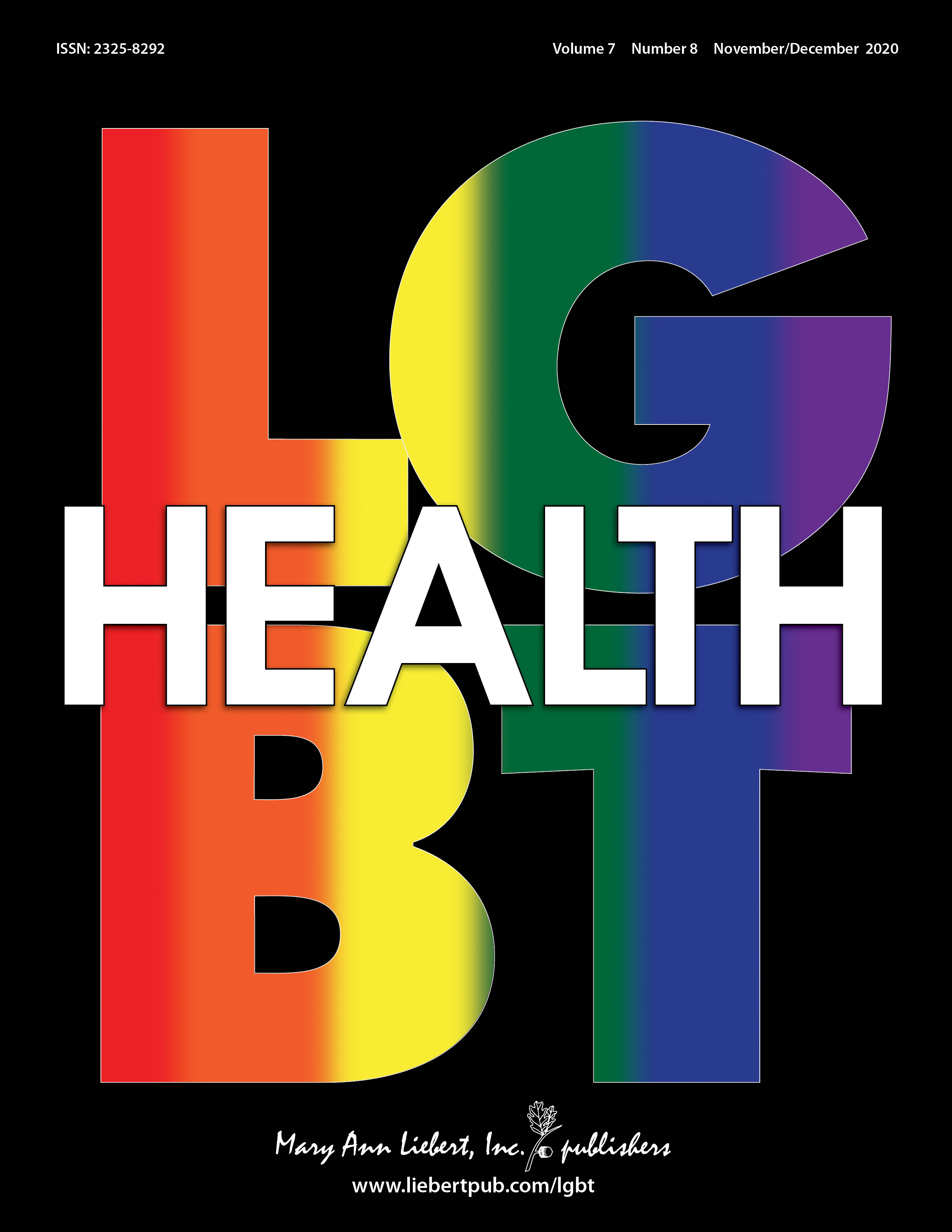LGBT Health
Sexual and Gender Minority Youth Health
Recent Progress and Addressing Knowledge Gaps
The health and wellbeing of sexual and gender minority (SGM) youth is of tremendous importance and receiving increasing attention in the scientific literature. Recent research has contributed significantly to our understanding of factors important to the mental, physical, and sexual health of SGM youth and has provided valuable information on both risk and protective factors associated with health outcomes; however, many gaps in our knowledge remain. In order to facilitate the efforts of all working to address the unique health-related needs of this vulnerable population – whether through research, provision of affirming clinically and culturally competent health care, community interventions, or health policy development – we have collated high-impact articles from LGBT Health that address key issues in this area. This collection of articles is available for free through June 30, 2020.
Considerable evidence suggests that many of the health disparities seen in SGM populations have their roots in youth and are linked to the chronic stress associated with membership in a stigmatized minority group.1,2 Health disparities among SGM youth include increased rates of stress-related problems such as anxiety, depression, and suicidality, and increased engagement in health-risk behaviors including alcohol, tobacco, and illicit substance use as well as sexual risk behaviors.3-6 These, in turn, are linked to multiple additional health problems over the life course, including cardiovascular conditions and particular cancers, as well as HIV and sexually transmitted infections.7-10
Although minority stress is not unique to SGM populations, individuals from other minority groups, such as racial, ethnic, or religious minority persons, are likely to share that minority status with their parents. Their parents may, therefore, be able to both anticipate the related stigma their children will face and to offer insightful support based on their own experiences. In contrast, SGM youth, regardless of their racial, ethnic, or religious heritage, usually have cisgender heterosexual parents who assume that their children are cisgender and heterosexual like themselves. As such, parents may fail to anticipate or perceive their child’s need for support related to SGM stress. Parents may also harbor SGM-negative attitudes that contribute to their child’s stigmatization. In fact, family rejection is strongly associated with mental health problems, suicidality, substance use, and sexual risk across SGM subgroups.11 Many studies of health disparities among SGM youth have sought to identify associated risk factors as potential targets for preventive intervention. In addition to family rejection, consistently identified risk factors include stigma, social marginalization, discrimination, bullying, and exposure to violence.11-13
Adding to the challenges of recruiting samples of research subjects that are adequate for full disaggregation of SGM subgroups by sex assigned at birth, gender identity, and sexual orientation, classification of sexual orientation and gender identity is particularly challenging among youth as awareness of sexual orientation and gender identity emerges developmentally.14-16 Understanding, self-labeling, and reporting one’s sexual orientation and gender identity may, therefore, vary over time during this developmental period. In addition, accepting a stigmatized identity is often met with resistance, and disclosing it to others may be prevented by embarrassment or fear.14,15 An emerging literature is focusing on potential protective factors for SGM youth, such as parental, peer, and school support, as well as inclusive sexual health education and enumeration of sexual orientation in state antibullying statutes.11,12,17,18
Gaps in the literature on the health of SGM youth have been identified by the Institute of Medicine,19 the National Institutes of Health,20 the Centers for Disease Control and Prevention,18 and several of the articles included in the present collection.11,13,21-23 These include 1) adequately powered studies of disparities among lower frequency SGM subgroups such as transgender and nonbinary populations disaggregated by sex assigned at birth, gender identity, and sexual orientation;11,19 2) studies that examine the intersectional impact of holding both SGM and other minority identities;13,19,21 3) studies of SGM youths’ skills and competencies related to sexual health literacy and their relationships with medical providers and trusted adults;18 4) studies that consider SGM status within the substantial research literature on health-promoting parental practices;11 5) studies of developmental processes in transgender youth including the impact of pubertal suppression; 24 and 6) longitudinal follow-up studies of health outcomes among subjects rigorously assessed and followed from youth.11,19,24
The articles selected for this special collection address a multiplicity of health issues and the needs of diverse populations of SGM youth. We hope the collection inspires thought and action to promote the needs of SGM youth and to address the identified research gaps and priorities.
William Byne, MD, PhD
Editor-in-Chief
Department of Psychiatry
Columbia University Vagelos College of Physicians and Surgeons
Download Free Articles
More
about this journal

Be notified
as new articles are published
